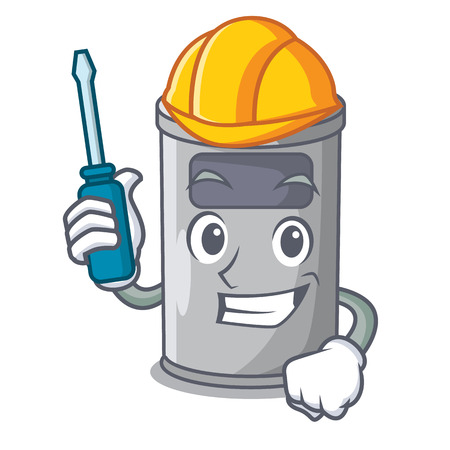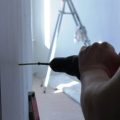Visible Cracks and Deteriorating Brickwork
One of the most common and telling signs that your chimney requires immediate attention in the United Kingdom is the appearance of visible cracks and deteriorating brickwork. The UK’s unpredictable weather—characterised by frequent rain, frost, and occasional storms—places a significant strain on masonry structures. When you notice fractures running along your chimney stack or bricks beginning to crumble (a process known as spalling), it’s a clear indicator that the structural integrity of your chimney is being compromised.
Why Are These Signs Critical in the UK?
The unique climate conditions across the UK mean that moisture easily penetrates porous brickwork, which then expands when frozen during colder months. This cycle of freezing and thawing accelerates masonry decay, leading to loose mortar joints and weakened bricks. If left unchecked, these issues can escalate quickly, resulting in costly repairs or even posing safety risks such as falling debris.
Common Indicators of Masonry Damage
| Sign | Description |
|---|---|
| Hairline Cracks | Small but expanding fractures on bricks or mortar joints |
| Spalling Bricks | Surface of bricks flaking or breaking away due to moisture damage |
| Loose Mortar | Gaps appearing between bricks, allowing water ingress |
Immediate Action Steps
If you spot any of these issues, especially after a bout of harsh weather, it’s essential to arrange a professional inspection. Early intervention not only preserves your property’s value but also ensures your home remains safe and structurally sound throughout the year. Regular maintenance, including repointing and sealing brickwork, is highly recommended to combat the persistent effects of the UK climate.
Loose or Missing Lead Flashing
Lead flashing is an essential component in safeguarding your chimney against the notoriously unpredictable British weather. When the lead flashing becomes loose, damaged, or goes missing altogether, it creates a direct route for water to seep into your property. This is particularly concerning given the UK’s frequent rain, wind-driven storms, and prolonged damp spells. Water ingress resulting from compromised flashing can cause significant structural damage, including rot in roof timbers, crumbling masonry, and unsightly damp patches on interior ceilings and walls. Left unchecked, these issues not only threaten the integrity of your home but can also lead to costly repairs.
| Typical Issues | Potential Impact |
|---|---|
| Loose Flashing | Allows rainwater to penetrate beneath roofing materials |
| Missing Sections | Creates large entry points for water during storms |
| Poorly Fitted Flashing | Fails to provide a weatherproof seal around the chimney base |
The British climate magnifies the risks associated with faulty lead flashing. Persistent moisture and freeze-thaw cycles can quickly worsen minor defects, turning them into major leaks. As such, even small sections of lifted or corroded flashing demand immediate attention from a professional roofer experienced with traditional UK building methods. Prompt repairs ensure that your chimney remains weather-tight and your home protected throughout the changing seasons.

3. Water Stains and Damp Patches Indoors
If you’ve noticed water stains or damp patches appearing on the ceilings or walls near your chimney, it’s a clear warning sign that should not be ignored. In the United Kingdom, where frequent rainfall is part and parcel of the climate, chimneys are especially prone to leaks. This persistent moisture can seep into your home, revealing itself as yellowish-brown marks, peeling paint, or even bubbling wallpaper around the chimney breast or nearby surfaces.
Common Signs of Chimney Leaks Indoors
| Sign | Likely Location | Potential Risk |
|---|---|---|
| Water stains | Ceilings/walls near chimney stack | Mould growth, weakened plaster |
| Damp patches | Chimney breast, attic space | Timber rot, insulation damage |
| Bubbling paint or wallpaper | Around fireplace or adjacent rooms | Poor indoor air quality, structural decay |
Why This Happens in the UK
The UK’s wet weather accelerates wear and tear on chimney flashings, brickwork, and mortar joints. If these components are compromised—even slightly—rainwater will find its way inside. Over time, this not only leads to unsightly staining but also weakens your property’s structure, making prompt repair essential.
What Should You Do?
If you spot any of these symptoms in your home, arrange for a professional chimney inspection without delay. Addressing leaks early can prevent more severe—and costly—damage down the line. Regular maintenance is key to keeping your chimney safe and sound amid Britain’s unpredictable weather.
Obstructed or Poor Draught
One of the most common—and potentially hazardous—signs that your chimney requires immediate attention in the United Kingdom is an obstructed or poor draught. This issue often becomes apparent when you notice smoke spilling back into your living space rather than being effectively drawn up and out through the flue. Such symptoms not only disrupt the comfort of your home but also introduce significant safety risks, especially during cold UK winters when fireplaces and stoves are in regular use.
Recognising Blockage Symptoms
If you observe any of the following, your chimney may be suffering from a blockage or inadequate airflow:
| Symptom | Potential Cause |
|---|---|
| Smoke entering the room | Nest or soot build-up blocking the flue |
| Difficulty lighting or maintaining a fire | Poor ventilation or partial obstruction |
| Persistent unpleasant odours | Damp creosote deposits or decaying organic matter |
The Dangers: Carbon Monoxide and Beyond
Poor draught is not just inconvenient—it poses a genuine danger to household safety. An inefficiently vented chimney can lead to the build-up of carbon monoxide, an odourless and colourless gas which is particularly perilous during winter months when homes are sealed against the cold. Exposure to carbon monoxide can cause serious health issues such as headaches, dizziness, nausea, and in extreme cases, can even be fatal.
Why Prompt Repairs Matter in the UK Climate
Given the damp and windy British weather, obstructions are often caused by fallen debris, nesting birds (such as jackdaws), or the accumulation of soot after extended periods of heating. Regular maintenance is crucial to prevent these blockages from compromising both your comfort and safety.
Key Takeaway for Homeowners
If you detect any signs of poor draught, do not delay—contact a certified chimney sweep or repair specialist to conduct a thorough inspection and necessary repairs. Proactive attention ensures your chimney operates efficiently throughout the challenging UK winter season.
5. Falling Debris or Soot Buildup
One of the most telling signs that your chimney needs urgent attention is the sudden appearance of debris, such as loose chimney pots, soot, or brick fragments, in your fireplace. In British homes, these issues are far from rare and often signal underlying structural problems or even the presence of animal nests within the flue. Dislodged chimney pots are particularly common in older UK properties, where severe weather and age can loosen masonry. Similarly, piles of soot or brick fragments suggest internal deterioration—potentially compromising both safety and efficiency.
| Type of Debris | Likely Cause | Recommended Action |
|---|---|---|
| Loose Chimney Pots | Weathering, ageing mortar, storm damage | Professional inspection and secure replacement |
| Soot Build-up | Poor ventilation, infrequent sweeping, blockages | Arrange for a certified sweep and check for obstructions |
| Brick Fragments | Internal flue damage, frost action, structural movement | Masonry repairs and thorough structural assessment |
| Nesting Material (twigs, feathers) | Birds (often jackdaws) nesting during spring/summer | Remove nest safely; fit a bird guard to the pot |
The sight of any of these materials inside your fireplace should not be ignored. Apart from obstructing smoke flow and reducing heating efficiency, such debris raises the risk of chimney fires—a notable hazard in the UK’s colder months when fireplaces are used most frequently. Additionally, animal nests may introduce further complications like odours or infestations. If you notice any falling debris or a noticeable build-up of soot, it’s vital to consult a local chimney professional to prevent escalating damage and maintain your home’s safety.
6. Unusual Odours from the Fireplace
One of the more overlooked yet telling signs your chimney requires immediate repairs is the presence of persistent musty or smoky odours, especially during rainy or damp weather—a common occurrence in the UK. These unusual smells often indicate that moisture has intruded into your chimney system, potentially leading to hidden structural damage or even mould growth. Moisture can seep through damaged masonry, faulty flashing, or a compromised chimney cap, which then allows water to collect and interact with soot and creosote deposits. This combination not only produces unpleasant odours but also accelerates deterioration inside your chimney structure.
| Odour Type | Possible Cause | Associated Risk |
|---|---|---|
| Musty Smell | Water intrusion, mould growth | Structural weakening, health risks |
| Smoky Smell | Soot/creosote build-up, blocked flue | Fire risk, poor air quality |
If you notice these odours persistently—particularly after heavy rainfall or prolonged damp conditions—it’s crucial to arrange a professional inspection without delay. Left unchecked, moisture-related issues can compromise both your chimney’s integrity and your households safety. Addressing the root cause promptly ensures your chimney continues to operate efficiently while preventing further costly damage.


